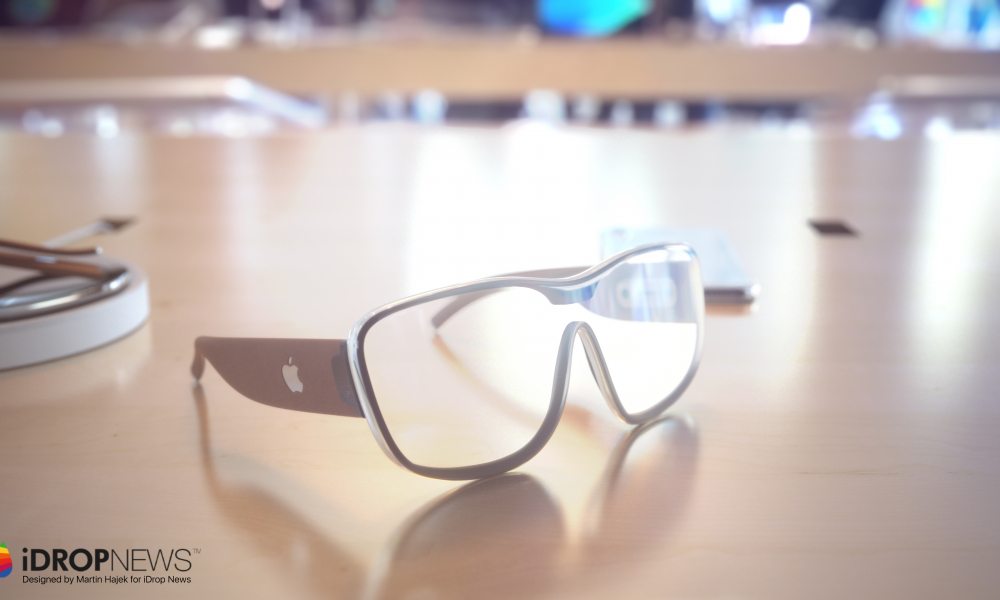Apple’s AR Headset May Be Closer Than We Thought
 Credit: iDrop News
Credit: iDrop News
Toggle Dark Mode
There’s been a lot of smoke and mirrors around Apple’s AR Glasses project lately that have muddied the waters as to exactly what Apple’s plans are. While we’ve been hearing rumours for at least two years that Apple is working on something in that area, they’ve only started to come into focus a bit more recently, as Apple has acquired new team members. Yet we’ve also heard reports that Apple may have shelved the project, combined with others that suggest it’s still very much on track.
In any case, although most analysts have pegged the release as somewhat further off — 2020 at the earliest — new reports suggest it could actually be coming sooner than we think.
Documentation discovered by MacRumors for an internal build of iOS 13 suggests that development has not only been continuing, but that Apple could even be releasing the first version of the new headset sometime during the iOS 13 lifecycle.
The Code Is in There
Specifically, these internal builds of iOS 13 — which are separate from the beta builds being made available to developers right now — include a “STARTester” app that is designed to support a “head-mounted” mode that simulates an augmented reality headset on an iPhone for testing purposes. In effect, the app shows what a user would see if wearing an AR headset, presented on the iPhone screen. Two head-mounted states are also include in the app, “worn” and “held.”
An internal README file in these iOS 13 builds also describes a “StarBoard” system interface (likely named in contrast to the standard “SpringBoard” iOS home screen app) that would be used for AR-enabled apps in stereo vision, which definitely points to a headset of some kind. The same file also names an augmented reality device, codenamed “Garta” that is being developed as one of several prototypes under an umbrella device moniker of “T288.”
Additional internal iOS 13 code includes even more references to the new “StarBoard” interface, with many new strings referring to “StarBoard mode” along with a whole slew of “views” and “scenes” and AR references such as “ARStarBoardViewController” and “ARStarBoardSceneManager.” The internal Find My app bundle also includes an icon that depicts what appears to be an AR or VR headset, although the “B389” code in the file name suggests that these might just be related to the new AR mode item tracking features, rather than Apple’s actual headset.
Developer Steve Troughton-Smith, who is well-known for uncovering secrets hidden with iOS code, also indicated that the number of references to Apple’s AR headset is not only unusual, but speculated that it could even have contributed to Apple’s considerably more rocky beta cycle.
Glasses or Goggles?
One thing that we have no way of knowing from the code is what the first implementation of this headset will actually look like. Although it seems fairly clear that Apple’s ultimate plan is for a set of AR glasses akin to Google’s Glass, it’s less clear whether Apple can actually have the technology ready for that in the short term.
A set of recent patent applications have also revealed that Apple is working on more advanced features, such as a laser and mirror system that will reflect light into a user’s eyes to create an image rather than using an actual display screen — technology that would clearly lend itself more to a traditional set of glasses than an Oculus-style headset.
Reports earlier this year suggested that the AR glasses will be iPhone-dependent, at least in their early generations. This doesn’t really say anything about their design, of course, and it seems likely that this will be handled in a way similar to the path that the Apple Watch took, beginning with the glasses being an extension of the iPhone and gradually moving away from that as Apple improves the technology.
When Could It Actually Be Coming?
While most analysts still agree on a 2020 launch date, it’s not at all impossible that Apple could announce the headset as soon as next week’s iPhone event. There’s certainly precedent for doing this, and although it hasn’t always worked out so well for Apple, it would certainly help to build hype for the new product, as well as ensuring developers are on board for when it launches.
Like the original iPhone back in 2007, this seems to be a situation where we’re going to start hearing a lot about Apple’s headset soon anyway, especially if Apple wants to build a robust app ecosystem for it, so Apple may prefer that it be the one to tell the world about it.
On the flip side, however, the mere existence of testing code in iOS 13 isn’t conclusive, and since these are internal builds, it’s not even clear if this will be part of iOS 13.0, or 13.1, or some later point release. It’s also worth remembering that code for Dark Mode was found in iOS 10 three years ago, yet it took until iOS 13 for Apple to actually introduce the feature — and Dark Mode seems like a much easier thing to implement than a hardware-based AR headset.
Still, regardless of when Apple actually chooses to unveil it, the plethora of code references in iOS 13 shows that the company is making very serious preparations for its new AR headset, and all signs point to it at least being on track for next year, regardless of what form it ultimately takes.
[The information provided in this article has NOT been confirmed by Apple and may be speculation. Provided details may not be factual. Take all rumors, tech or otherwise, with a grain of salt.]






